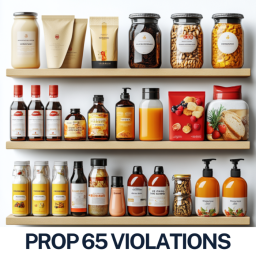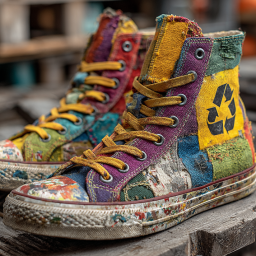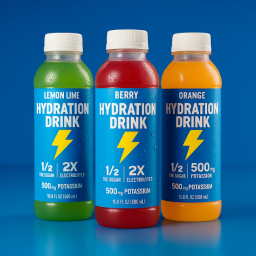
Fashion brands are on notice. A new wave of textile regulation called Extended Producer Responsibility (EPR) laws is emerging in California, the European Union, and other jurisdictions. These laws shift the burden of textile waste management from consumers to manufacturers and brands.
For apparel companies, the stakes are high: compliance deadlines are approaching, costs will rise, and non-compliance could mean fines, lost retailer relationships, and reputational harm.
What Are Textile EPR Laws and How Do They Impact Apparel Brands?
EPR laws make producers including apparel manufacturers, importers, and retailers financially and operationally responsible for the end-of-life of their products.
For fashion brands, this could mean:
- Paying fees into state-approved textile recycling and collection programs.
- Reporting on material composition, recycling rates, and waste diversion.
- Meeting stricter labeling and disclosure rules on recyclability and sustainability.
California’s SB 707 (2023) is a leading example in the U.S., while the EU textile waste directive is already reshaping global supply chains. California’s Legislative Information site provides full details of SB 707.
Why Apparel Companies Must Prepare Now for EPR Compliance Deadlines
Deadlines are coming fast. California’s program begins phasing in requirements over the next few years, with reporting obligations expected as early as 2026. The EU is on a similar track, with additional sustainability reporting already in effect.
The risks of waiting are significant:
- Financial penalties for non-compliance or missed reporting.
- Market access risks EU importers may reject non-compliant products.
- Retailer pressure large retailers increasingly require suppliers to show compliance.
- Brand reputation damage if sustainability claims can’t be backed by compliance data.
For apparel companies with global supply chains, this means compliance isn’t optional it’s now a core business requirement.
The Financial Impact of Textile EPR Laws on Apparel Brands
EPR isn’t just another legal hoop it’s a budget item. Apparel brands should prepare for:
- Producer responsibility fees paid to manage textile waste.
- Technology investments in supply chain tracking and reporting systems.
- Product redesign costs to increase recyclability and reduce waste.
- Marketing compliance costs to validate sustainability claims.
For executive teams, this means compliance planning needs to be integrated into financial forecasting. Those who don’t budget now risk scrambling later and absorbing unplanned costs.
How Apparel Brands Can Prepare for Textile EPR Compliance
Here’s a practical compliance roadmap:
- Audit your supply chain Map textile inputs, recycled content, and end-of-life management across suppliers.
- Check labeling and marketing Check labeling and marketing Confirm “sustainable” or “eco-friendly” claims meet FTC and EU standards, and be mindful of overlapping rules like Prop 65 requirements on labeling.
- Plan for compliance costs Allocate budget for producer fees and reporting tools.
- Track regulatory developments California and the EU are leading, but New York and other states are drafting similar bills.
- Engage legal counsel early Regulations vary across jurisdictions; proactive legal strategy avoids last-minute compliance crises.
Strategic Opportunities for Fashion Brands Under EPR Laws
While the new rules may feel like a burden, forward-thinking apparel companies can use them to stand out:
- Brand differentiation Compliance builds trust with sustainability-minded consumers.
- Retailer partnerships Retailers prefer suppliers with clear compliance strategies.
- Investor confidence Demonstrating ESG compliance reduces risk.
- Global readiness Companies prepared for EU rules will have a competitive edge as other markets follow.
In other words: EPR can be a compliance cost or a brand advantage depending on how you respond.
FAQ
Do smaller apparel brands have to comply?
Yes. Most EPR laws apply to any brand selling into the jurisdiction, regardless of size. Some states or countries may offer small business exemptions, but these are usually limited by revenue or sales thresholds. Even online-only apparel sellers are considered “producers” if they sell into California, the EU, or another regulated market. Small brands may face proportionally lower fees but still need to register, report, and demonstrate compliance.
What types of apparel are covered by textile EPR laws?
The scope is broad. Clothing, footwear, accessories, and even household textiles (like towels, sheets, and linens) typically fall under EPR programs. If your brand produces or sells textile products, assume they will be included unless specifically exempted. The definition of “textile” is often intentionally wide to capture the full range of fashion and apparel products.
What if my brand imports into California or the EU?
Importers and distributors are treated as “producers” under most frameworks and must comply just like domestic manufacturers. For example, a U.S. brand selling into the EU through wholesale or e-commerce is responsible for compliance, even if the product is made overseas. This means apparel companies must coordinate with suppliers, logistics partners, and local distributors to ensure all compliance obligations are met.
Is EPR only about textile recycling?
No. While recycling and collection are core components, EPR also covers funding for textile waste management, accurate labeling of materials, marketing claims, and supply chain reporting. Apparel companies must prepare to provide detailed data about sourcing, production, and end-of-life management. Greenwashing enforcement is increasingly linked to EPR meaning that inaccurate sustainability claims can trigger both advertising penalties and EPR violations.
How can EPR compliance affect my retail and wholesale relationships?
Retailers and wholesale buyers are increasingly risk-averse when it comes to sustainability. Many require proof of compliance with EPR and related laws before carrying new products or renewing vendor agreements. Non-compliance could mean losing valuable shelf space or e-commerce partnerships. On the other hand, brands that demonstrate leadership in EPR compliance may gain preferential treatment in retailer sustainability initiatives.
Final Takeaway
Textile EPR laws are not a distant threat they are already reshaping the apparel industry. Brands that act now will avoid fines, protect retailer relationships, and position themselves as leaders in sustainability.
Need help navigating textile EPR compliance? Contact Juris Law Group for expert guidance.












